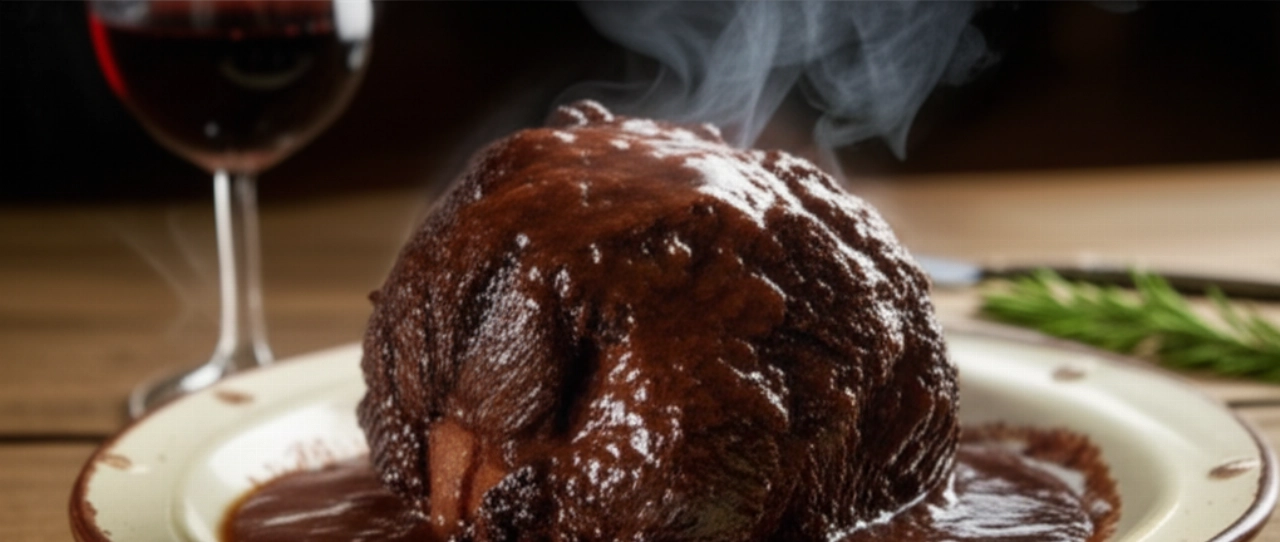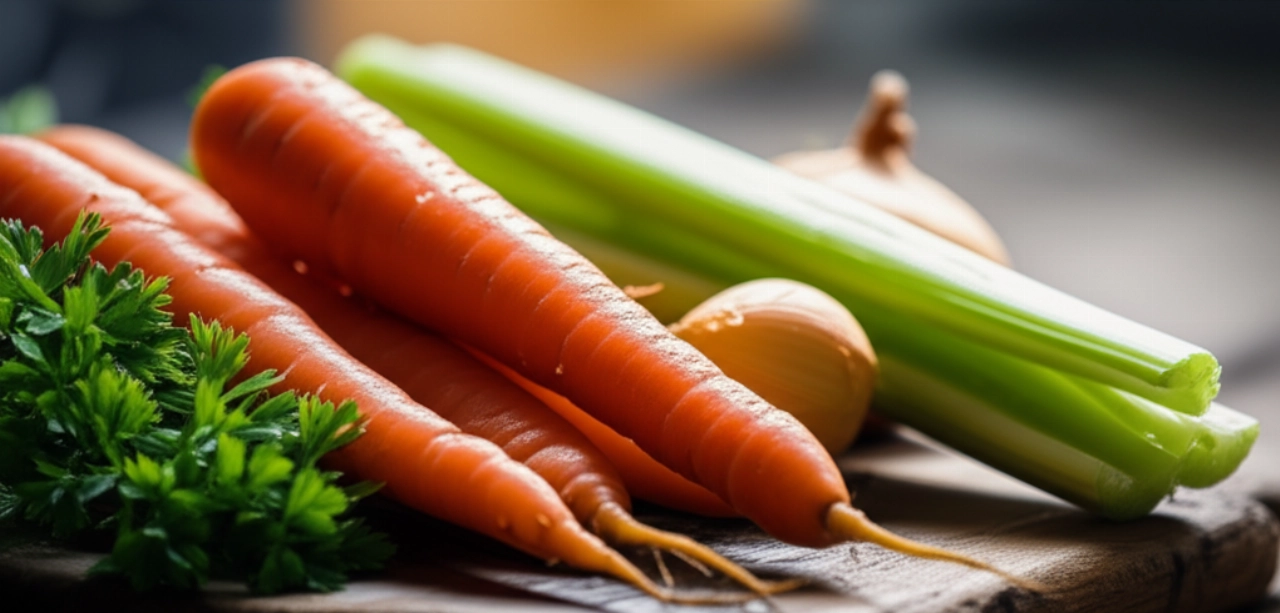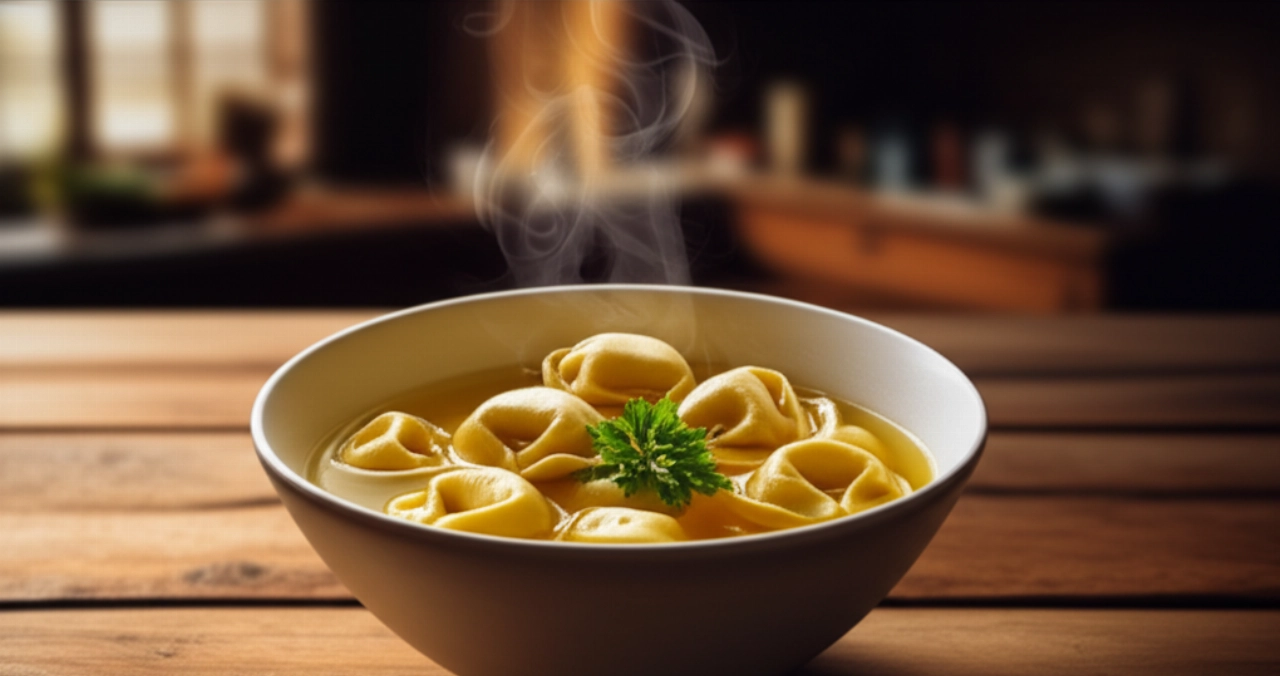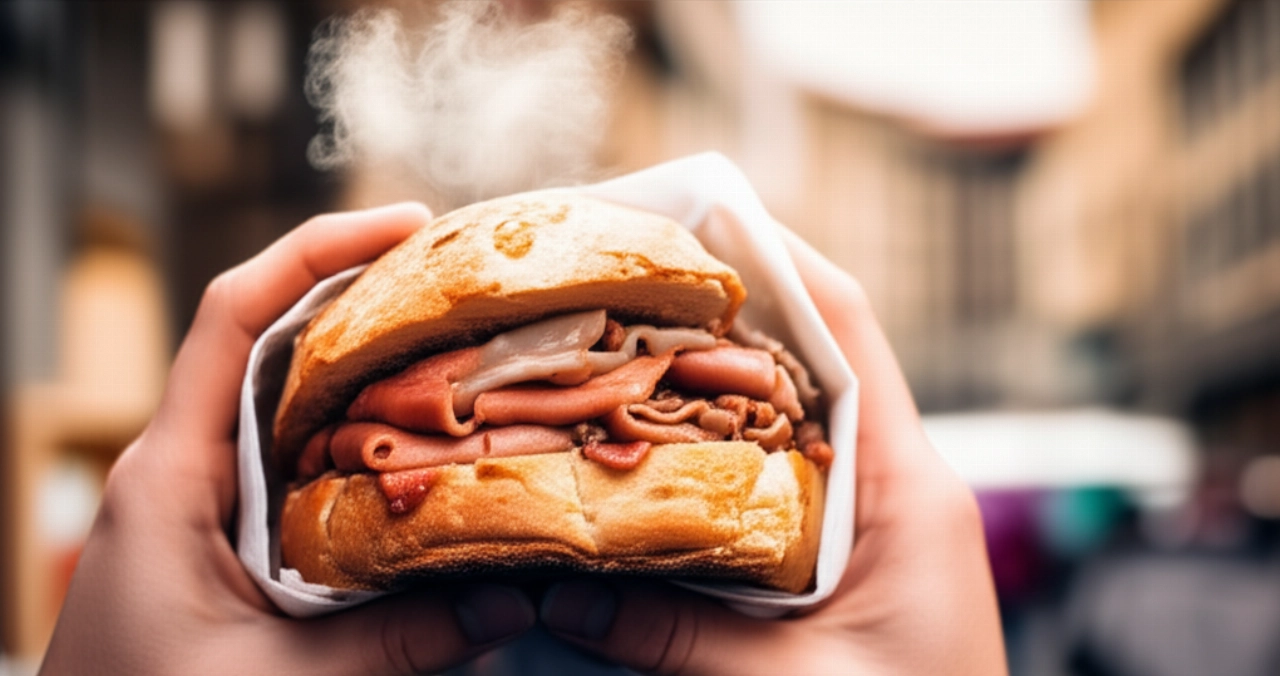There's a scent that smells of home, of Sundays, of comfort, and childhood memories. It's the scent of beef broth, that magical base that transforms a simple dish into an unforgettable culinary experience. But how many times have you tried to make it and it turned out cloudy, bland, or too greasy? It seems easy, yet the secrets to a perfect broth are few and precious, passed down from generation to generation.
Finding the right recipe, one that guarantees a clear result and a deep flavor, can seem like a challenge. The fear of wasting precious ingredients or not achieving that "grandma's taste" is common. But fear not, you're in the right place!
Make yourself comfortable. Here you won't just find a list of ingredients, but the definitive guide, full of tricks and tips, to prepare a beef broth so crystal clear and flavorful that it will become your signature in the kitchen. Success is guaranteed, and every spoonful will be a true embrace. I'll guide you step by step to achieve a broth that will not only delight the palate but also make you feel like a true home chef, just like grandma revealing her secrets.

Ingredients for a Perfect Beef Broth: The Choice That Makes the Difference
The secret to an exceptional broth begins with ingredient selection. It's not just about quantity, but about the right quality and combination. Each element plays a fundamental role in building that rich flavor and clarity we seek.
- Mixed Meats (approx. 1 kg):
- Beef: A piece of muscle (like shank or shin) for intense flavor and gelatin.
- Hen or Capon: For a more delicate note and a "sweeter," yellower broth. If you don't have hen, a piece of chicken is fine, but hen is the traditional choice.
- Marrow Bone: Essential for rich flavor and to give body to the broth. Ask your trusted butcher for it.
Why this choice? The combination of different meats ensures a balanced broth: beef provides depth, hen sweetness and color, and the marrow bone that umami richness that makes the broth irresistible. Avoid overly lean cuts; they wouldn't give enough flavor.
- Vegetables ("Aromatics"):
- 2 medium Carrots: Peeled and cut into large pieces.
- 2 Celery Stalks: Well cleaned and cut into pieces.
- 1 medium Onion: Peeled and left whole (or cut in half).
Why these vegetables? They are the aromatic base of the broth. They release natural sugars and aromas that blend with the meat, creating a complex and enveloping bouquet of flavors. Don't skimp on their quality; they are the vegetable heart of the broth.
- Cold Water (approx. 3-4 liters):
Why cold? This is a crucial point! Starting with cold water, the proteins and flavors from the meat and vegetables are extracted slowly and more effectively, ensuring a more flavorful and clear broth. If you used hot water, the proteins would "seal" too quickly.
- Coarse Salt:
When to add it? Only at the end! Salting at the beginning would make the meat tough and the broth might become too salty once reduced. It's better to adjust the flavor after cooking is complete.
- Aromatics (Optional but Recommended):
- A few black peppercorns: For a slightly spicy note.
- 1-2 cloves: Stuck into the onion, for a more complex and spicy aroma.
- A sprig of parsley: Added in the last 30 minutes of cooking for freshness.
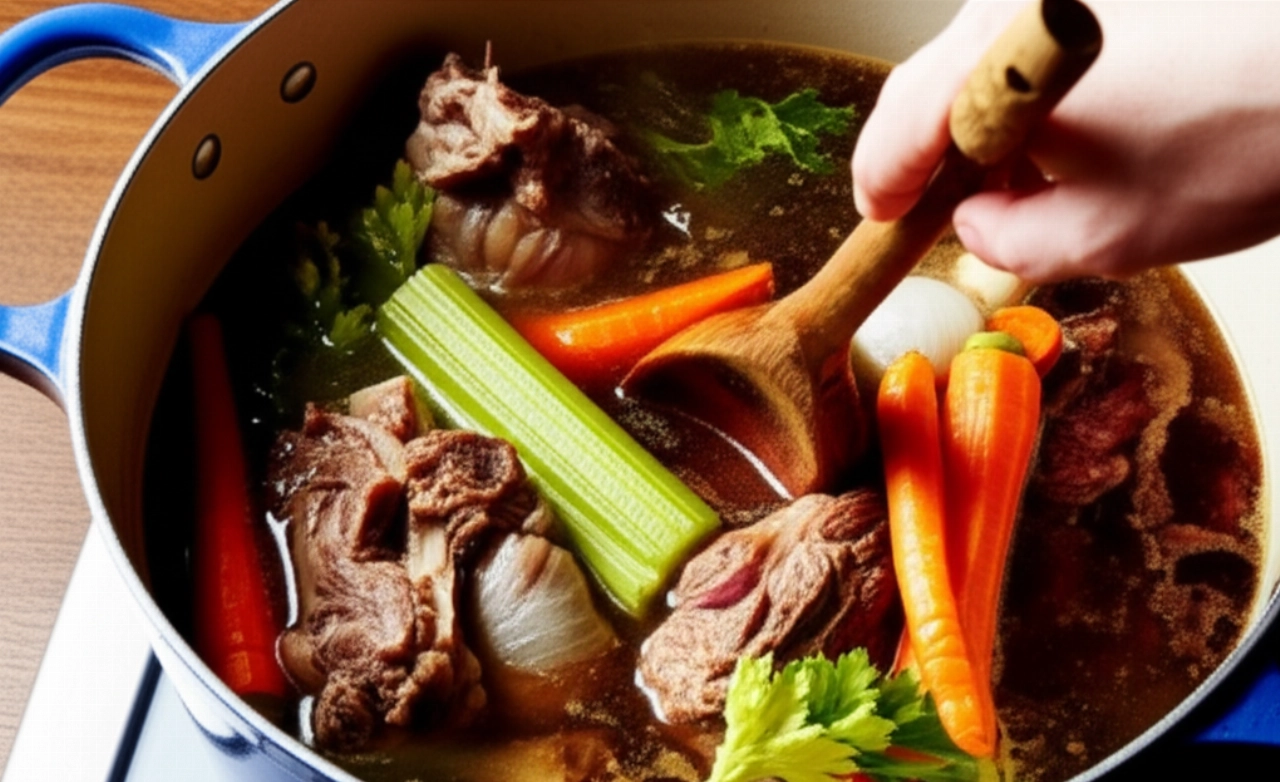
The 3 Mistakes That Make Broth Cloudy or Bland (and How to Avoid Them)
Preparing a perfect broth isn't difficult, but there are some pitfalls that can compromise the final result. As a "kitchen guardian," I'll reveal the tricks to avoid them and guarantee you an impeccable broth.
- Using Hot Water at the Beginning: As mentioned, this is the most common mistake. Hot water "seals" the meat proteins, preventing them from fully releasing their flavor into the broth. The result? A less flavorful broth and tougher meat. The secret: Always start with cold water!
- Boiling Too Vigorously: A broth that boils "like a torrent" excessively agitates the ingredients, breaking down the fibers of the meat and vegetables. This releases small particles that make the broth cloudy and compromise its clarity. The secret: The broth should simmer gently, over very low heat, with just a few bubbles rising to the surface. Patience is the keyword.
- Not Skimming or Skimming Poorly: During cooking, the meat releases impurities and coagulated proteins that form a grayish foam on the surface. If not removed, this foam disperses into the broth, making it cloudy and less clean-tasting. The secret: Arm yourself with a slotted ladle or skimmer and constantly remove the foam as it forms, especially during the first 30-60 minutes of cooking. Be meticulous!

Grandma's Secret: The Magic Touch for a Crystal Clear Broth
My grandma, a true kitchen master, had a little trick that made her broth not only flavorful but almost incredibly clear. One day, while teaching me how to prepare it, she told me: "Remember, broth is like life; it takes patience and a bit of cleverness."
Her secret for an amber-colored and perfectly clear broth was the charred onion. Before adding the onion to the other ingredients, she would cut it in half and toast it on a hot non-stick pan, without any seasoning, until the surface became almost black. This process caramelized the onion's sugars, giving the broth a more intense color and a deeper, slightly smoky flavor, without making it bitter. It's a small gesture that makes a huge difference, a true "kitchen guardian" touch!
Let's Prepare Beef Broth Together: The Step-by-Step Guide
Now that you know all the secrets and the right ingredients, it's time to get cooking. Follow these steps calmly and carefully, and your broth will be a masterpiece.
- Initial Preparation:
- Clean the vegetables: Peel the carrots, clean the celery, and peel the onion. If desired, stick the cloves into the onion.
- Wash the meat: Rinse the meat pieces well under cold running water to remove any surface impurities.
- Start with Cold Water:
- Take a large pot (at least 5-6 liters).
- Arrange the meat and vegetables at the bottom of the pot.
- Cover generously with cold water. The water should be at least 3-4 fingers above the level of the ingredients.
- Add the black peppercorns and, if using, the sprig of parsley.
- Bring to a Slow Boil and Skim:
- Place the pot over medium-high heat and slowly bring to a boil.
- As the water heats up, you'll see a grayish foam form on the surface. It's crucial to constantly remove it with a slotted ladle or skimmer. This operation is vital for the broth's clarity. Be patient and continue skimming until the foam no longer forms or is minimal.
- Slow and Prolonged Cooking:
- Once you've skimmed well and the broth has reached a gentle simmer, lower the heat to minimum. The broth should only gently simmer, with just a few bubbles rising to the surface.
- Cover the pot with a lid, leaving a small gap for steam to escape.
- Let it cook for at least 3-4 hours. For a more intense flavor and very tender meat, you can extend cooking up to 5-6 hours. The slower it cooks, the more the flavor concentrates and develops.
- Adjust Salt:
- Only in the last 30 minutes of cooking, add the coarse salt. Taste and adjust the quantity to your liking. Remember that the broth should be flavorful but not excessively salty, especially if you'll use it as a base for other preparations.
- Strain the Broth:
- Once cooked, turn off the heat.
- Using a slotted spoon, gently remove the pieces of meat and vegetables. You can use them to prepare an excellent mixed boiled meat dish or other recipes.
- Strain the broth through a fine-mesh sieve, lined with clean cheesecloth or a thin cotton cloth. This step is essential to remove even the smallest impurities and obtain a perfectly clear broth.
- Degrease (if necessary):
- Let the broth cool to room temperature. Once cold, the fat will solidify on the surface, forming a white layer.
- Remove this layer of fat with a spoon. This way, you'll have a lighter and more digestible broth, without losing flavor.
- If you're in a hurry, you can put the broth in the refrigerator for an hour or two: the fat will solidify faster.
Tips and Frequently Asked Questions about Beef Broth
We know doubts can arise, and it's right to clarify them all. Here are the answers to the most common questions about beef broth, to give you maximum confidence.
- Can I use only one type of meat?
- Yes, you can. However, for a more complex and balanced flavored broth, the combination of beef and hen/capon is highly recommended. If you only use beef, choose cuts with bone and a bit of fat for flavor. If only hen, the broth will be lighter and more delicate.
- How do I degrease the broth properly?
- The best method is to let the broth cool completely in the refrigerator. The fat will solidify on the surface, and you can easily remove it with a spoon. If you're in a hurry, you can pass the broth through a fat separator (with the spout at the bottom) or use a piece of paper towel to blot the surface.
- Can I freeze the broth?
- Absolutely! Broth freezes beautifully. You can pour it into airtight containers, ice cube trays (for small portions), or single-serving containers. It keeps in the freezer for 3-4 months. It's a great way to always have it available for your recipes.
- Why is my broth cloudy?
- The main causes are: starting with hot water, boiling the broth too vigorously ("like a torrent"), or not skimming enough initial impurities. Remember: cold water, very low heat, and constant skimming are your allies for a clear broth.
- How long does broth keep in the fridge?
- Once prepared and degreased, broth keeps in the refrigerator in an airtight container for 3-4 days. Make sure it's completely cold before storing it.
There you have it! Now you no longer just have a recipe, but all the secrets to bring to the table a beef broth that is much more than a simple liquid: it's a concentrate of flavor, tradition, and love. A true pillar of Italian cuisine that will open the doors to endless preparations, from the creamiest risotto to festive tortellini.
Don't be afraid to experiment and make this process your own. Cooking is an act of creativity and generosity. But start with this solid base, and you'll see that applause will not be lacking. The satisfaction of a perfect broth is priceless!
Have you tried our beef broth recipe? We're very curious to see your masterpiece! Leave a comment below, tell us how it went, or share a photo on Instagram by tagging @CercaRicette.it. If you loved this broth, you can't miss our recipe for a creamy Risotto alla Milanese or for homemade Tortellini in Brodo. Your kitchen will become the heart of your home!
